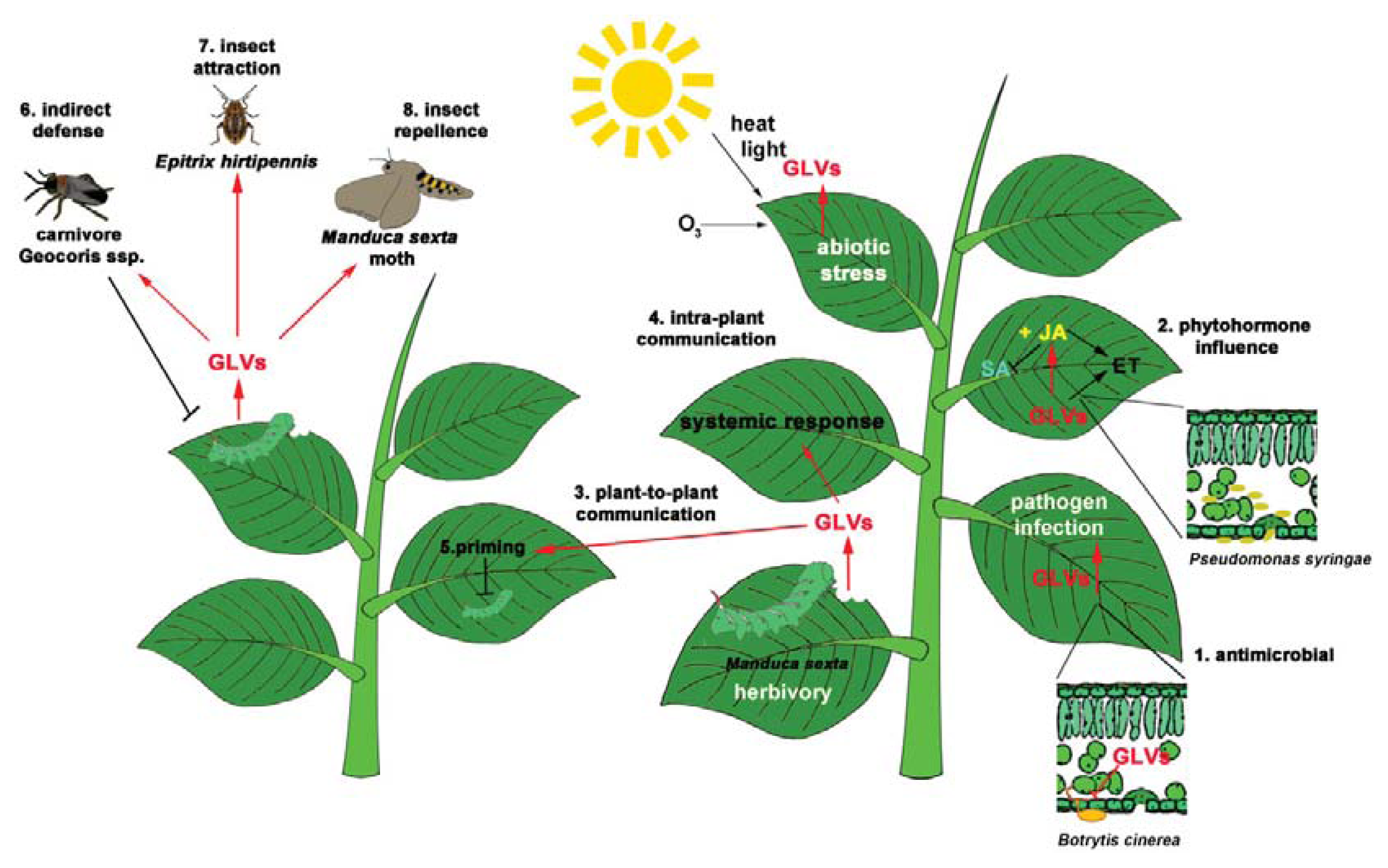November 28, 2023
Unveiling Plant Communication: The Intricate World of Green Leaf Volatiles

Understanding GLVs: Beyond Aroma to Vital Plant Signaling
- Plants rely on Green Leaf Volatiles (GLVs) not just for their pleasant scent but as crucial distress signals against impending threats, particularly herbivore attacks. This intricate communication system operates as a natural warning mechanism among plants, enabling them to prepare for potential dangers.
Plant Eavesdropping and Inter-Plant Communication
- A fascinating aspect of this signaling system is the ability of plants to ‘eavesdrop’ on neighboring plants’ distress signals. This phenomenon allows them to preempt similar threats, showcasing a remarkable inter-plant communication mechanism.
Agricultural Revolution: Paving the Way for Pest Control
- Unraveling this natural warning system holds significant promise for revolutionizing agricultural pest control. This understanding could potentially mitigate the need for harmful pesticides, offering eco-friendly alternatives in agriculture.
Delving into Plant Defense Mechanisms
- Research, particularly involving mustard plants like Arabidopsis thaliana, highlights the pivotal role of calcium in plant defense mechanisms. Upon damage, calcium levels surge, triggering plant responses. Innovations with genetically modified fluorescent plants tracking these responses have shown plants’ ability to detect and react to both physical damage and GLV exposure.
Key GLVs and Gene-Level Responses
- Certain GLVs, such as E-2-HAL and Z-3-HAL, have been identified as triggers for significant plant responses. Exposure to these volatiles activates defense-related genes, signifying how plants perceive these volatiles as danger signals. This gene activation could serve as a critical step in enhancing natural plant defense mechanisms against herbivores.
Implications and the Road Ahead
- The implications extend to the realm of agricultural pest control, offering potential alternatives to chemical pesticides. Researchers also explore substances like jasmonic acid, aiming to strike a balance between pest control and optimal plant growth and fruit production.
Expanding Frontiers in Plant Sensory Research
- This groundbreaking study encourages further exploration into understanding how plants perceive and respond to external stimuli, particularly in intricate natural environments where signaling dynamics are multifaceted. However, challenges persist in field studies, primarily due to the dilution of these signaling compounds in open-air settings.
Daily Gist : The Hindu/Indian Express : 30 Jan 2025
January 30, 2025
Gist of editorial : the Hindu/ Indian Express/20 Jan 2025
January 20, 2025
Daily the Hindu/ Indian Express Editorial Gist: 14 Jan 2025
January 14, 2025
